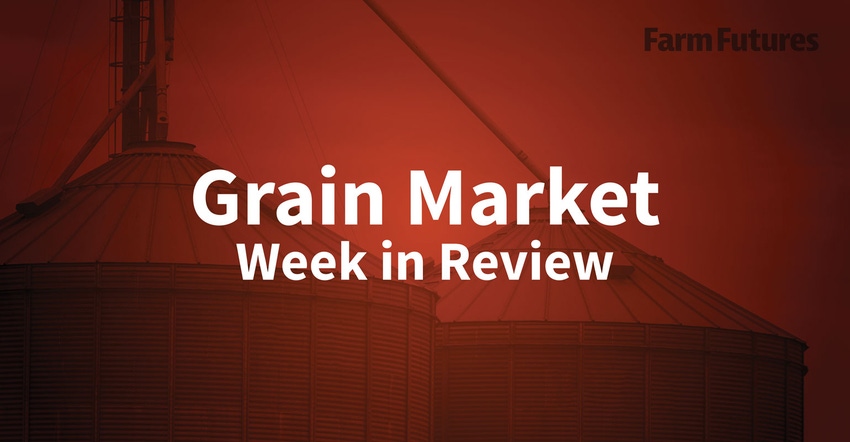November 13, 2020

Missed some market news this week? Here's what you need to catch you up.
Ag Marketing IQ
The 2021 grain markets are once again presenting an opportunity to lock in good starting prices. Starting 2021 with almost $4 corn and $10 beans is a nice way to jump into marketing next year’s production! What’s the first and greatest lesson we learned from 2020? You can’t predict price movement. Using this will help you do a better job marketing the next crop. When you’re presented with prices and a starting point that can make you profitable, take advantage of those opportunities.
Tuesday’s bullish USDA crop reports – and the equally bullish reaction of grain markets to the news – are yet another reminder it’s never a good idea to get either too negative or too positive in your outlook for prices. Keeping a cool head was never more important than in 2020, a year that’s already produced incredible shocks. And the year isn’t over yet. While the calendar flips to 2021 on Jan. 1, the 2020 crop selling season still has months to run. The historic fall rally is giving growers a chance to take the money and run – all the way to the bank with a profit. Still, with markets on fire, it’s only natural to wonder if these moves have another act.
The market had begun to trade sideways last week, needing new bullish information to keep it fed. The market got just what it needed with yesterday’s report. While some thought USDA would alter harvested acres, they left that alone and instead adjusted yields lower. The agency dropped corn yields by 2.6 bpa, reducing overall corn yield to 175.8 bpa. It reduced soybean yield by 1.2 bpa to 50.7 bpa. Both of these were enough to help put ending stocks at the bottom or below the average trade range.
Cattle futures lost over $10.00 in early October due to ample beef production and continued COVID-19 lockdown measures across the country, which diminished restaurant demand for beef. In late October prices found a burst of fundamental and technical support, leading to a two-week price surge resulting in a $10.00 recovery in futures prices. At the moment, December live cattle futures are near the $113.00 price point, and back near the price highs the futures market saw back in early August and late September.
For most of you, what is happening in agriculture right now will only happen once in your career. For a few (like me), this might be the third time. It is very rare when supply and demand curves move much. Demand curves are usually slow to move and are often affected more by policy change than anything. International trade policy, tariff wars, developing environmental programs like ethanol, and international fiscal policy wars, are a few examples. Yet, what you are witnessing today is a major shift in demand.
Exports
Soybeans emerged as the clear winner in this week's weekly grain export inspection report data, moving higher week-over-week and besting all analyst estimates. Corn and wheat saw modest week-over-week declines, in contrast.
USDA’s latest weekly export sales report didn’t hold much bullish data for traders to digest. Soybean totals cooled to a marketing-year low, while corn and wheat tallies also underperformed compared to recent weeks.
Crops
USDA’s latest crop progress report, covering the week through November 8, showed that the 2020 corn and soybean harvests are both very close to completion, with more than nine out of every 10 acres now out of the field. Likewise, more than nine out of every 10 winter wheat acres are now in the ground.
USDA slashed 2020 yield forecasts for corn and soybeans more than any trade estimates had anticipated in the lead up to the November 2020 WASDE report release. Corn and soybean futures surged up 2.35% - 2.82% higher in the moments following the reports’ release. The smaller U.S. crops are part of a larger global trend of reduced crop output in 2020 as ending stock estimates for corn, soybeans, and wheat shrunk across the world.
Podcast
This week's WASDE report held a lot of other supply and demand data both domestically and overseas that warrants monitoring. We walked through what’s happening in the U.S., South America, China and other locations that could reveal where prices could be headed next. Listen to the latest Midweek Markets podcast.
Recaps
Falling energy futures on rising COVID-19 cases continued to weigh corn futures prices lower this morning as ethanol prospects dimmed. December corn futures traded $0.0075/bushel lower to $4.075 while March futures shed $0.01/bushel to $4.1725. Steady Chinese demand and tightening U.S. soybean supplies sent futures prices in the soy complex higher this morning. January soybeans were on track to post a $0.0275/bushel gain to $11.4825 while March futures added $0.03/bushel to $11.4775. Wheat prices wobbled this morning amid rising global coronavirus cases and reduced yield estimates from Argentina.
Soybean prices ended a rollercoaster week with a round of technical buying that pushed prices moderately higher Friday. Wheat prices moved moderately higher after a round of technical buying Friday but closed with weekly losses – nearby CBOT contracts are down nearly 1.6% since Monday’s open, for example. Corn prices finished Friday’s session narrowly mixed, which tightened up the spread between December and March contracts a bit.
About the Author(s)
You May Also Like




